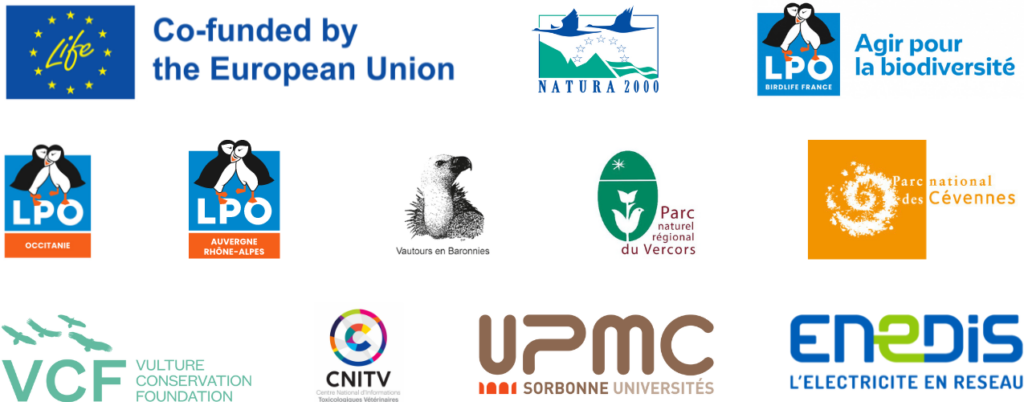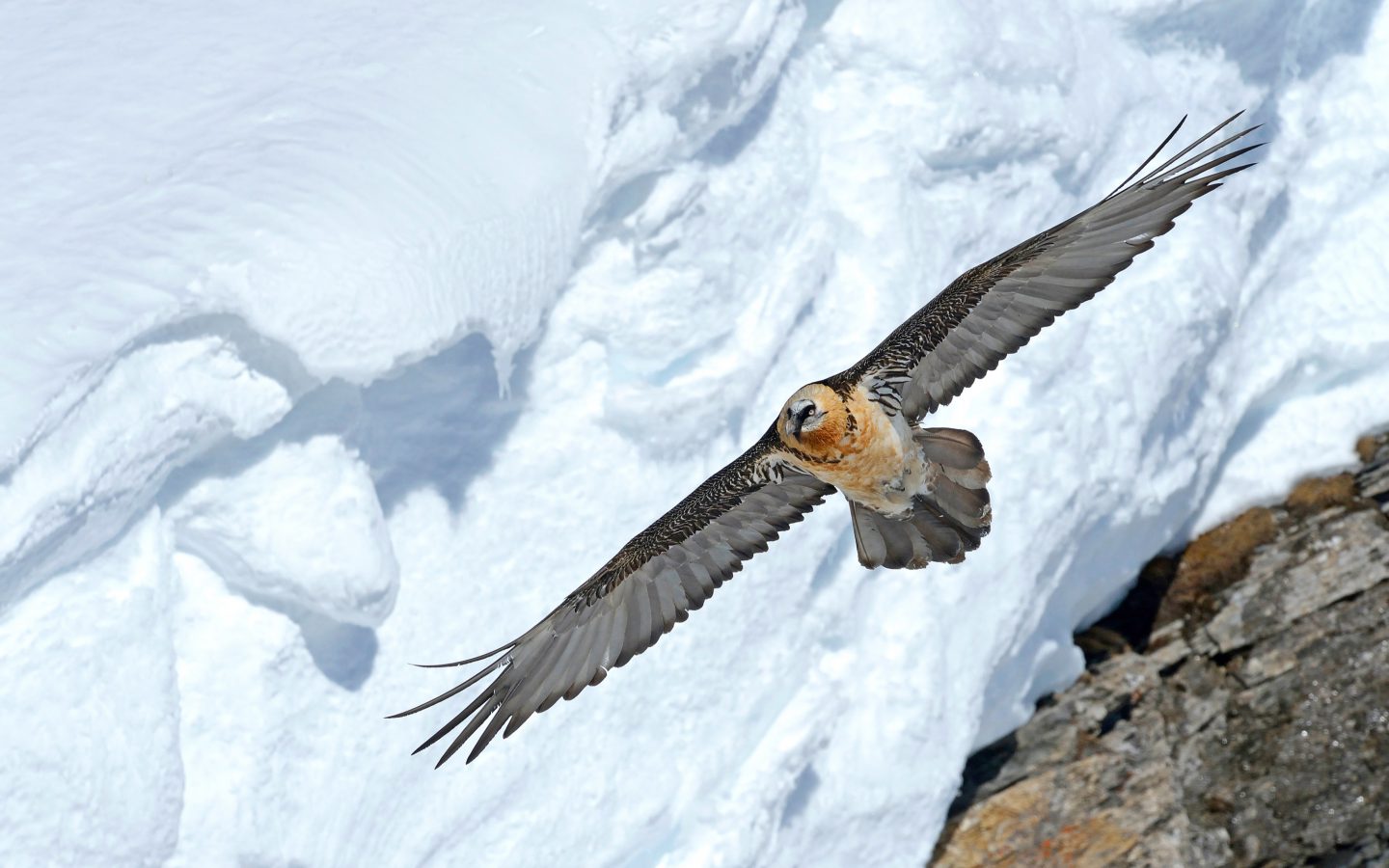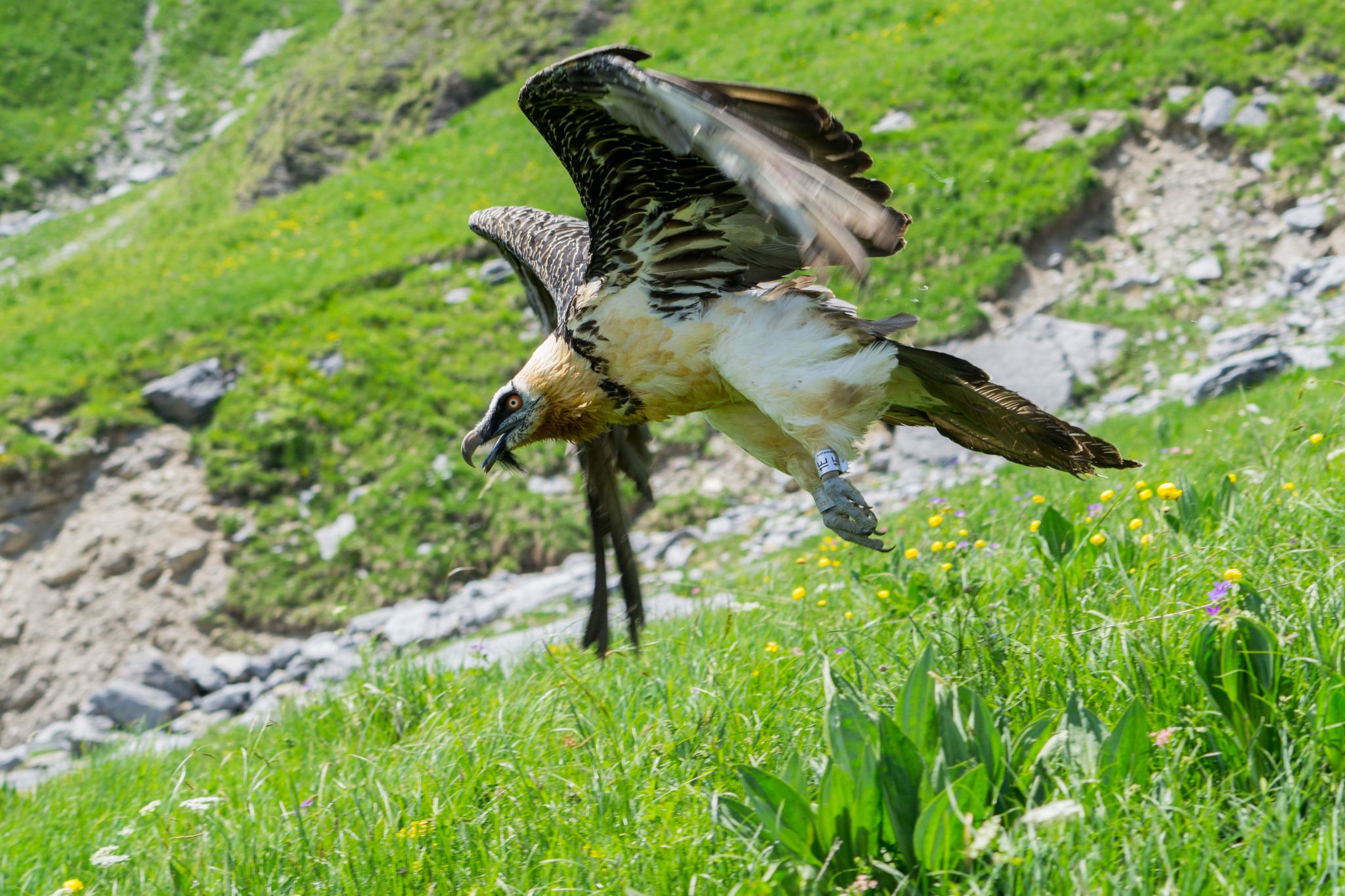Over the past few months, the young Bearded Vulture (Gypaetus barbatus) ladies reintroduced in the Grands Causses in 2024 have been off to some big adventures! These curious birds have been flying far and wide across Europe, just like young vultures love to do. Their travels help us understand how these birds might one day reconnect different mountain ranges and rebuild a thriving wild population across the continent.
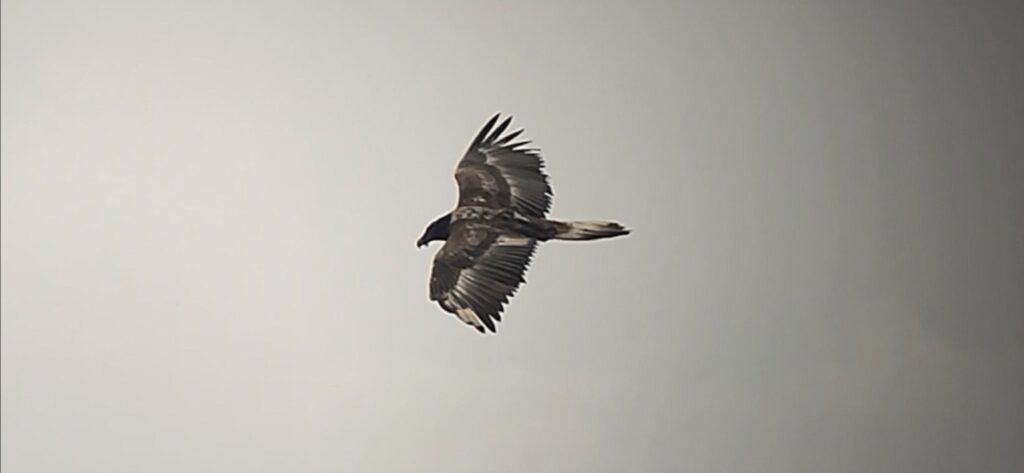
Young females on the move
A four females released in Grands Causses in 2024 have shown a strong exploratory drive, each taking distinct routes through France and beyond.
Tarn, a Bearded Vulture bred in captivity in Guadalentin, Spain, was the first to embark on an extended journey. Leaving the Massif Central on April 10, she headed east, quickly reaching the Swiss Jura. She continued her journey into the Alps, which she has been exploring ever since, going all the way to the Eastern Austrian helps before coming back to the Italian Alps.
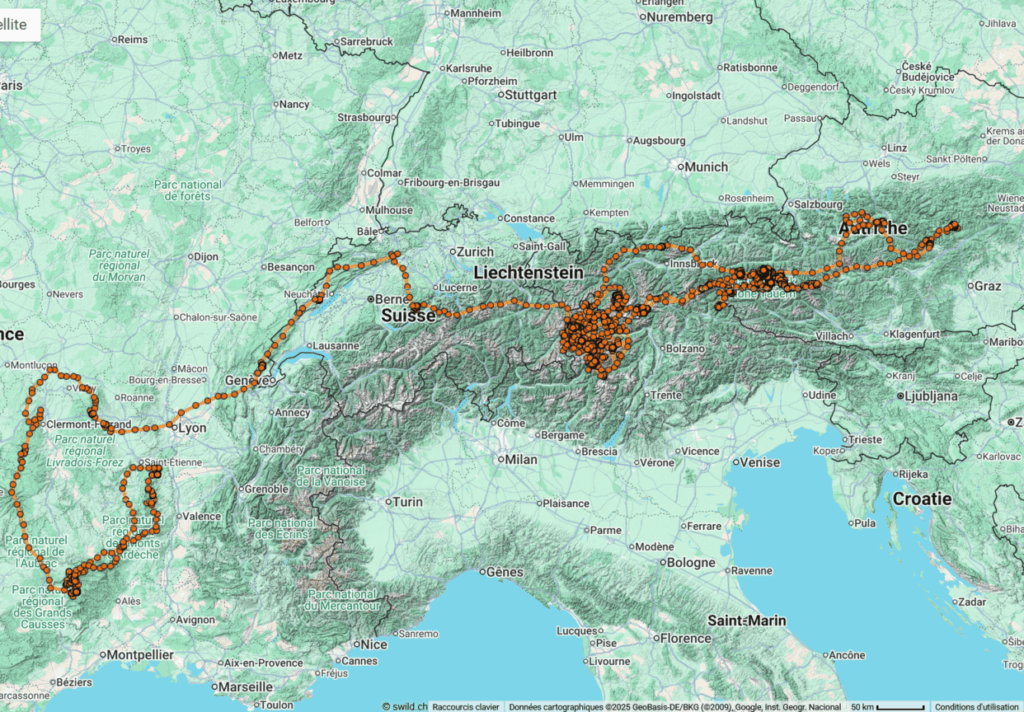
Terre, also originally from the Guadalentín captive-breeding centre, initiated her first dispersal one day later, on April 11, flying northwest to the Massonne Reserve in Charente-Maritime, before returning briefly to the Causses via Cantal. Just two weeks later, she was on the move again, heading to Brittany, where she explored several corners of the Atlantic coast, before eventually making her way south to the Pyrenees, where she has remained since May 5.
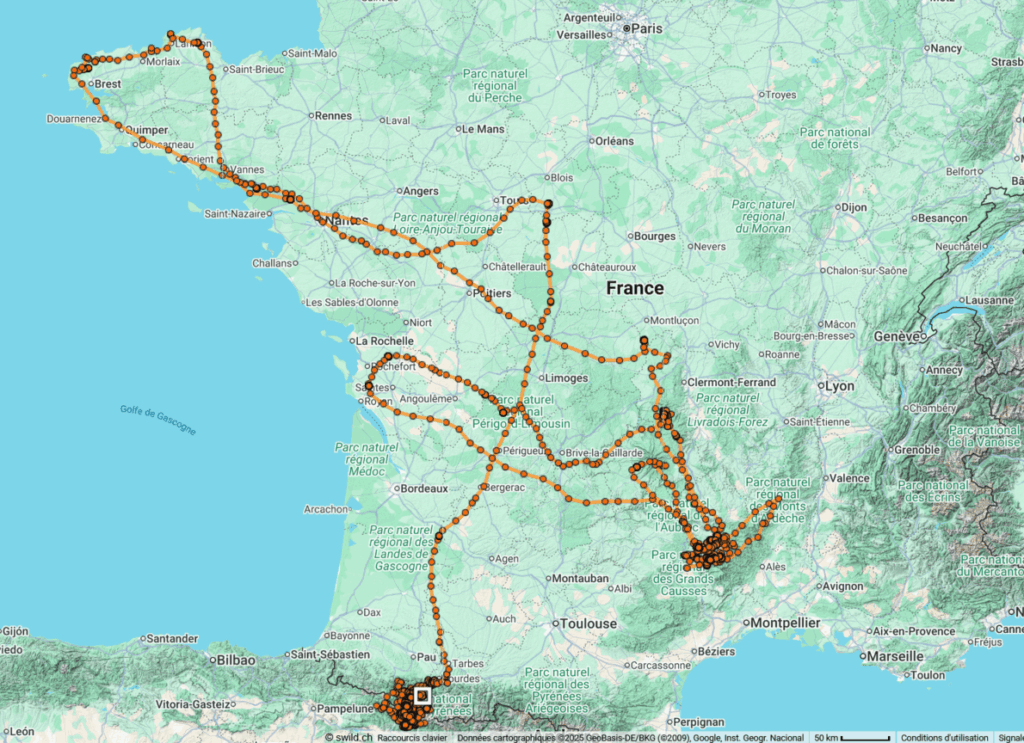
Tourmente, a Bearded Vulture from Ostrava Zoo in Czech Republic who unfortunately is no longer tracked by GPS, has been providing surprises through field observations instead. First spotted in the southwest coast of France on May 18, then in Brittany on May 23, she was later seen in the Alps on June 1—suggesting a wide-ranging route typical of a curious second-year bird.
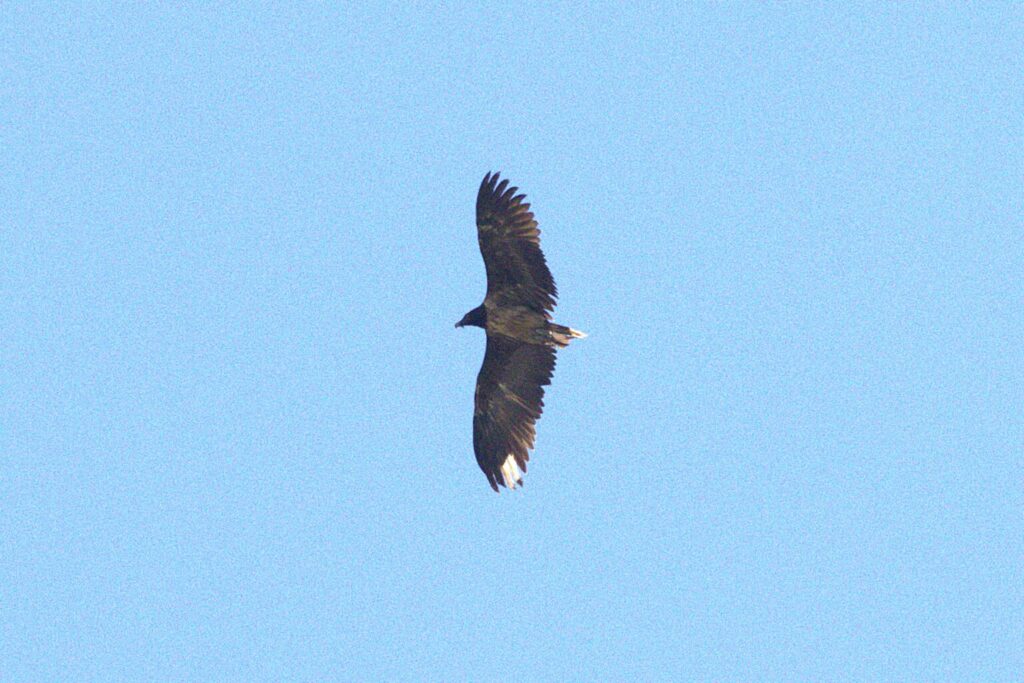
Last but not least, Tornado, also from Guadalentín, began her adventure on May 29. First she headed west to the Bay of Biscay. After briefly returning to the south of the Massif Central, she continued her journey, reaching the Pyrenees on June 16. She didn’t stop there; her exploration took her beyond the Pyrenean range into the Cantabrian Mountains, Picos de Europa, and the Galician Massif. Between May 1 and June 30, Tornado travelled an astonishing 7,400 kilometres.
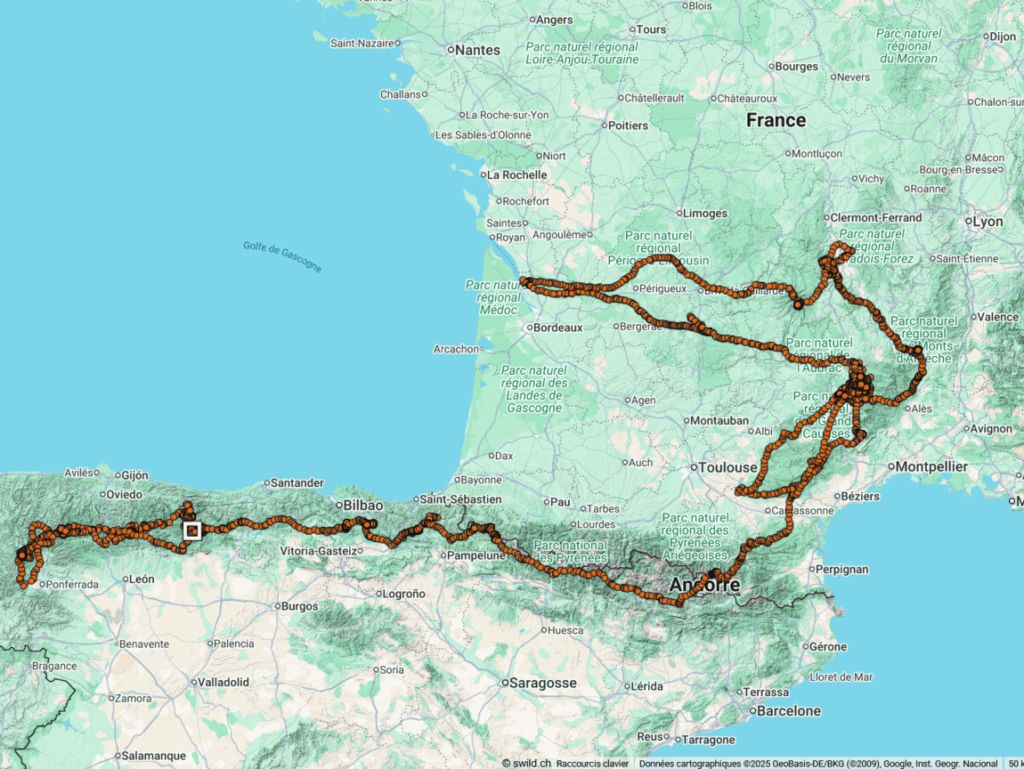
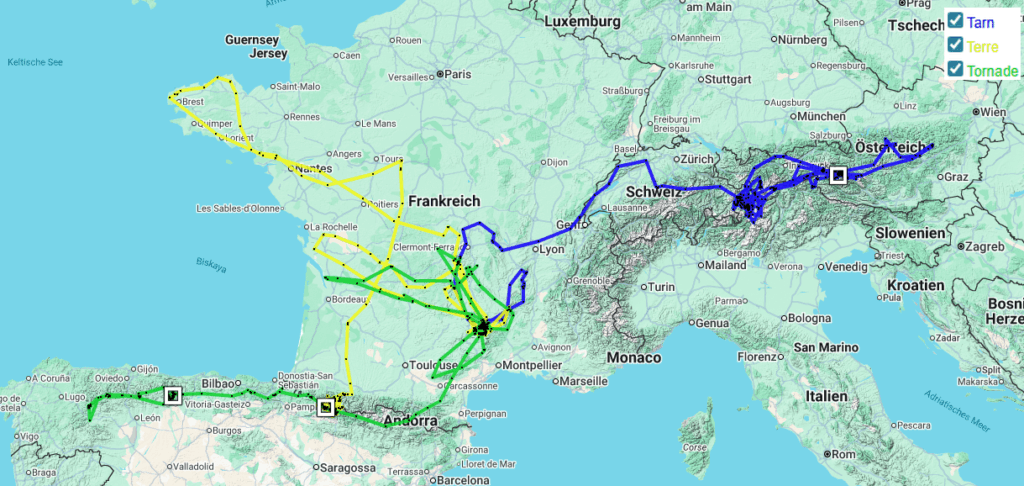
Older birds join the journey
Not only the recently released birds are on the move. Individuals released in previous years have also made notable flights between mountain ranges.
Sargas, a male released in 2023, reached the Alps in spring 2024 and spent nearly a year exploring the French Alps. On April 18, 2025, he briefly returned to the Grands Causses before heading back to the Alpine range less than a month later, on May 13.
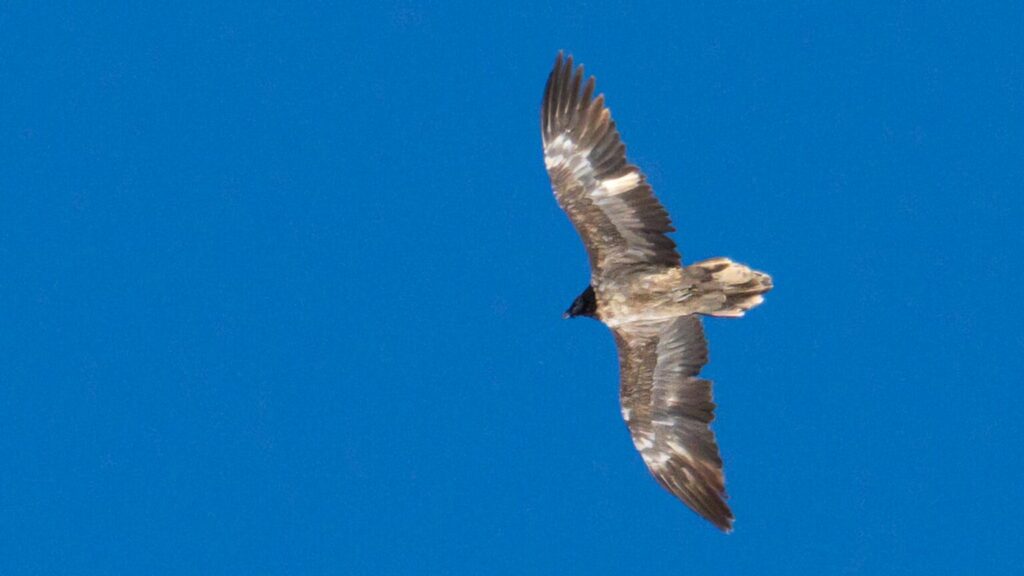
Serapias, a third-year-old female also released in 2023, took to the skies as well in June 2025. On June 21, she soared towards the Pyrenees, aided by favourable aerological conditions, and was tracked until the end of the month exploring this mountainous region.
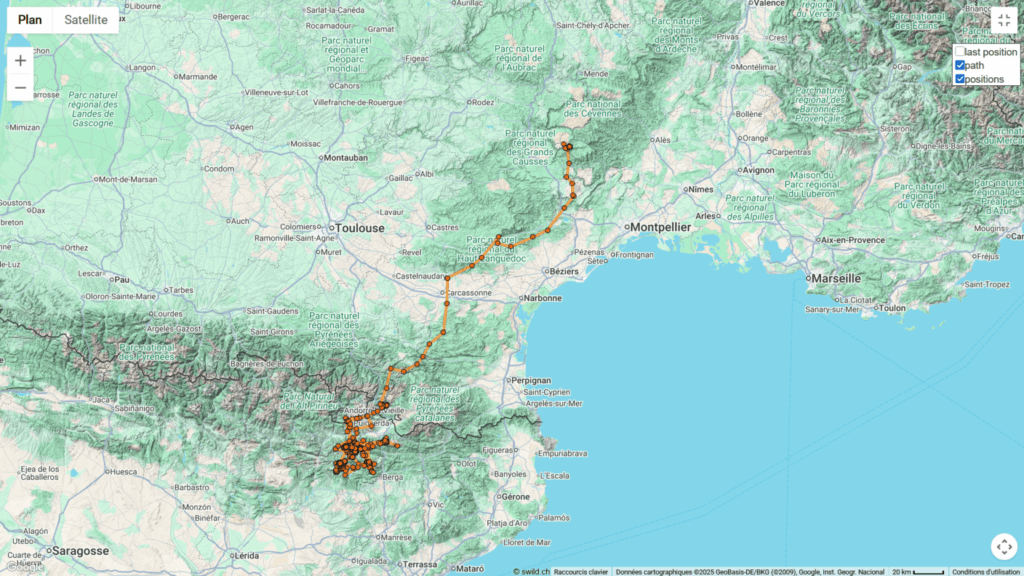
A promising sign for connectivity
These extensive movements highlight not only the remarkable flight abilities of the Bearded Vultures but also the growing success of reintroduction programmes. As young birds venture far beyond their release sites and older birds move between mountain ranges, we are witnessing the slow but steady re-establishment of natural connections between key populations in the Alps, Pyrenees, and now even the Cantabrian Mountains.

LIFE Gyp’Act is a 13M€ project, co-funded by the EU’s LIFE programme, that will run until 30 November 2028. Project partners are LPO – Ligue pour la Protection des Oiseaux as coordinator beneficiary, and the Vulture Conservation Foundation, Association Vautours en Baronnies, LPO Auvergne-Rhone-Alpes, LPO Occitanie, Sorbonne Université, ENEDIS, Centre National d’Informations Toxicologiques Vétérinaires, Parc National des Cévennes e Parc Naturel Régional du Vercors as associated beneficiaries.
